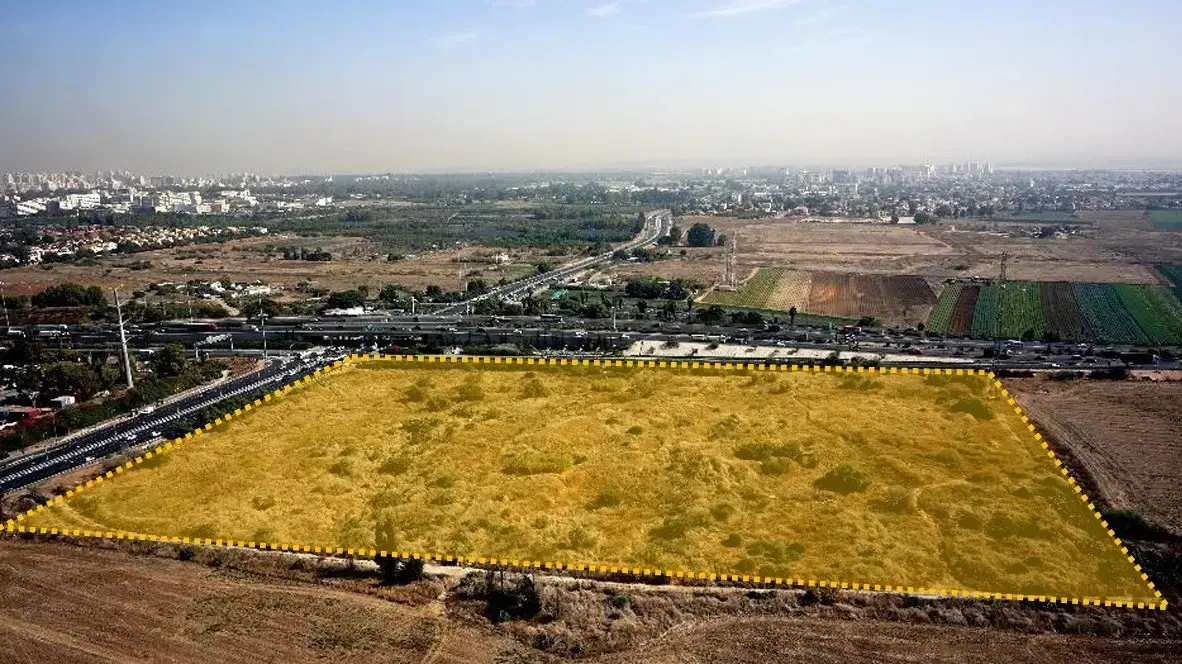There used to be a settlement here.
The excavations at the biblical Bnei Brak site/Antiquities Authority
Everyone knows the city of Bnei Brak between Ramat Gan, Tel Aviv, Givat Shmuel and Petah Tikva, but the city is named after the biblical Bnei Brak, which used to be located where Ariel Sharon Park is today (Hiriyeh), and is about to be resurrected.
The city is mentioned in the book of Joshua in the inheritance of the tribe of Dan: "For the descent of the children of Dan by their families, the seventh lot came out. And the border of their inheritance was Zerah and Eshtaol, and the city of Shamsh. And Eilon, and Timnatha, and Ekron, and Eltaka, and Gibton, and Balath, and Yehud, and Bnei
-Barak
, and Gath-Rammon, and the waters of the Yarkon , and the raccoon, with the border, in front of Jaffa" (Joshua, 19, m).
Now, as part of the plans to transform the metropolitan park - which covers an area of about 8,000 dunams and is known as one of the largest projects in the world in the field of environmental restoration into a green lung, which combines Heritage and Culture In the center of Gush Dan, the establishment of the "Biblical Bnei Brak" site is planned, which will recreate the history of the ancient village. The site will allow visitors a unique experience of a journey into the past, and will connect them to the roots of the Jewish tradition.
Visitors to watch the archaeological excavation process/Ariel Sharon Park
In planning: a symbolic reconstruction of a village from the Mishna period and the Talmud on its houses and buildings/Ariel Sharon Park
An area of the restoration site will be dedicated to the "Garden of Mishnah and Talmud Plants"/Antiquities Authority
One of the most famous Passover ceremonies in history was held on the site
The project includes a number of key components, among them an active excavation area in collaboration with the Antiquities Authority where visitors can observe the archaeological excavation process and learn about the process of discovering antiquities, a presentation of the Seder night table in the place where, according to tradition, one of the most famous Passover ceremonies in history was held by the sages of Israel, interactive games and a symbolic reconstruction of a village from the period of the Mishna and the Talmud about its typical houses and buildings.
Another part of the site will be dedicated to the "Garden of Mishnah and Talmud Plants", where the unique plants will be displayed from which it will be possible to learn about the world of the sages of Israel.
An orchard of carobs and figs, the typical fruit trees of the period, will also be established.
This is where the biblical Bnei Brak is planned to rise/Ariel Sharon Park
An opportunity to learn about the lifestyle of the sages of Israel thousands of years ago"/Antiquities Authority
Diggers from the 70s
The first archaeological excavation (rescue excavation) at Tel Bnei Brak, located southwest of the Masovim interchange, was conducted by the Antiquities Authority and Tel Aviv University in the 1970s, and found artifacts from the Chalcolithic period (4500-3500 BCE) and the Early Persian period (332-539) B.C).
Another excavation was conducted in 2005. When Ariel Shero Park was established, another large excavation was conducted.
Pottery from different periods was found in the excavations, a sherpa layer was uncovered with a few fieldstones as well as many fragments of pottery.
Visitors to watch the archaeological excavation process/Antiquities Authority
The site will be connected to the rest of the park through a system of paths and stations/Ariel Sharon Park
Connecting the site to the park through a system of paths and stations
The site will be connected to the rest of the park through a system of paths and stations, linking all the components to the historical story of the place.
Thus, the "Biblical Bnei Brak" site will be an integral part of the overall experience of visiting Ariel Sharon Park, and will be a central heritage site that makes the fascinating past accessible to the general public.
"Establishing the 'Biblical Bnei Brak' site is an important part of our vision to turn Ariel Sharon Park into a center of attraction that combines nature, leisure and heritage," says Dan Lichtman, the park's CEO. "The planned site will allow visitors of all ages and backgrounds to experience the rich Jewish history Experiential and unmediated.
This is a rare opportunity to touch our roots, and learn about the lifestyle of the sages of Israel thousands of years ago.
All this while staying in a green and relaxing environment in the heart of the busy urban space."
More on the same topic:
Bnei Brak
Ariel Sharon Park
freedom

